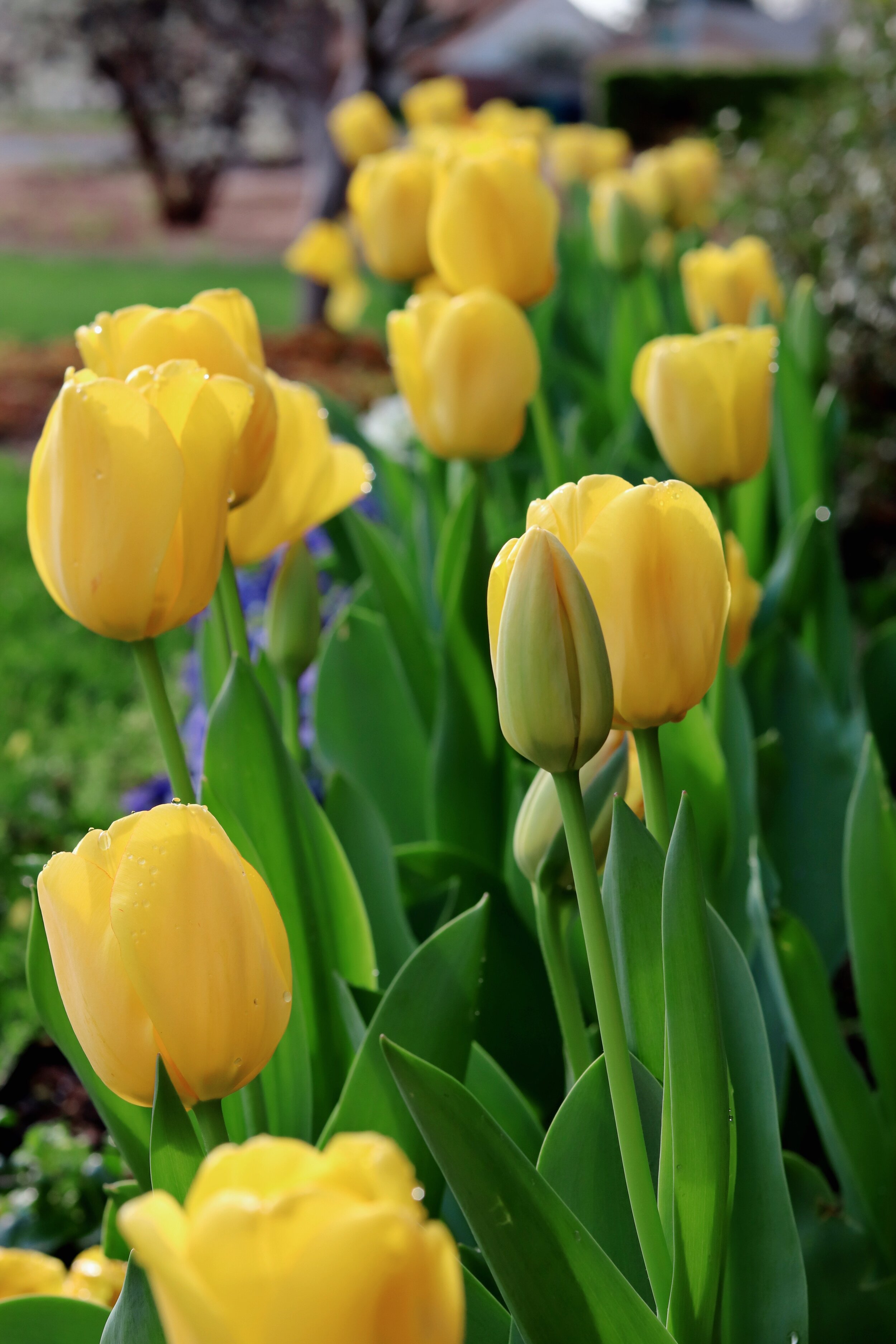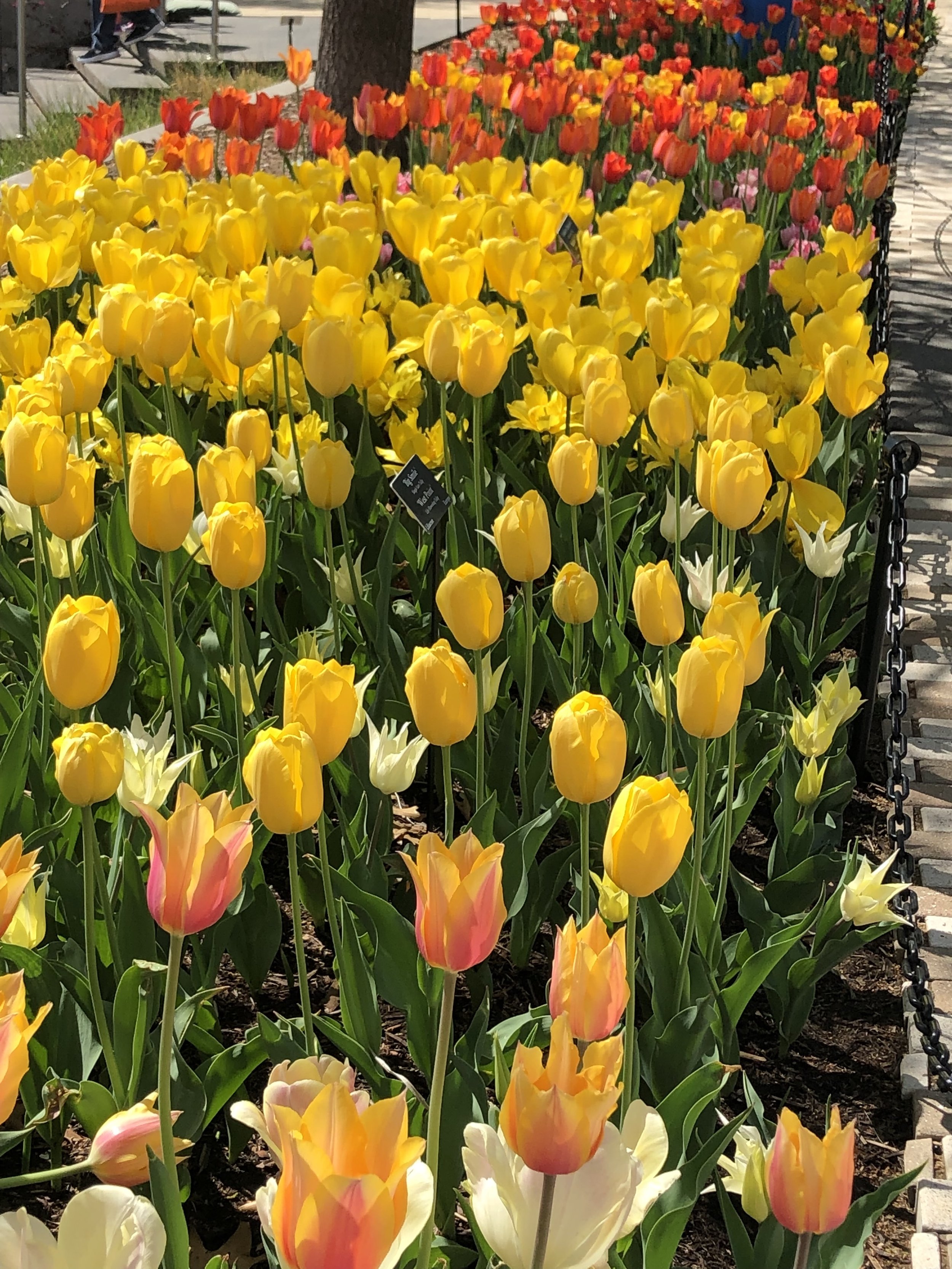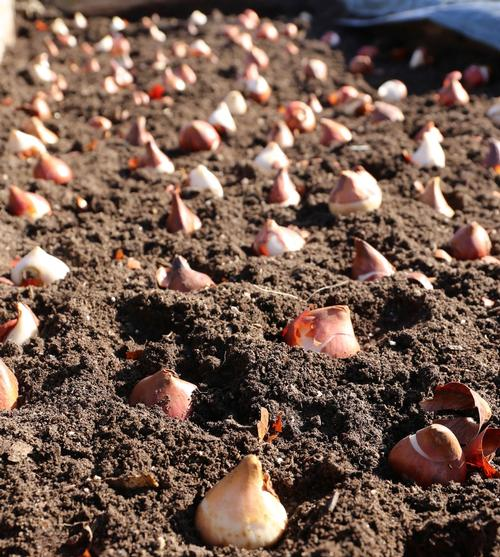What requires planning now, planting next month, but you don’t get to enjoy until next spring?
Spring Flowering Bulbs!
Instant gratification is a part of our everyday world.
A common belief is that if you want it now, you can have it now.
You can order something online this evening with a good chance it will be on your doorstep tomorrow evening.
Does delayed gratification still exist?
There may not be a better example of delayed gratification than spring-blooming bulbs.
If you don’t plan for and plant spring-flowering bulbs this fall, Amazon can’t fix it for you next spring!
The wonderful blooms of tulips, daffodils, and hyacinth cannot be added to the landscape in the spring on a whim.
The most vibrant colors you will enjoy next spring require planning now and action next month to experience them.
Let’s answer a few questions so you can have dynamic color next spring:
When to plant? Spring blooming bulbs need to be planted from early November through mid-December. They are best planted after the first freeze, which in central Oklahoma is typically between October 28 and November 3. And, because spring bulbs require winter chilling for successful blooming, it is best to plant them within the first 6 weeks after the first freeze. Planting later may greatly diminish your success.
Tulips at the Myriad Gardens in Spring 2019
Daffodils are a spring blooming bulb that is very forgiving of our tight clay soils and are perennials in our area (meaning they will come back year after year).
Where to plant? Bulbs require well-drained, rich, organic soil. They do not perform well in the native, tight clay soils that dominate central Oklahoma. All spring blooming bulbs prefer full sun, but because they grow and bloom while trees are mostly dormant, you can have success planting under trees. Tulips perform best as far south as USDA Hardiness Zone 6. If you live in southern Oklahoma, daffodils and hyacinths are a better choice for spring blooming bulbs.
How to plant? Bulbs should be planted at a depth of two to three times their height, or approximately 4-6”. Shallow planting exposes cool season bulbs to summer heat. Plant with the rounded end down and the pointed end up. Bulbs do not need to be fertilized when they are planted. But, if your soil is not rich in organic material, I recommend mixing in compost when planting.
Tulip colors are nearly limitless. A great local show of tulip colors is the Myriad Gardens. Pencil in a date on your calendar for next spring to check them out.
Spring bulbs have a dynamic impact when planted in mass.
Are spring blooming bulbs annuals or perennials? Tulips in central Oklahoma are best used as an annual - meaning you will want to replant them every fall. You will have some repeat blooming the first year or two, but they diminish in results each year. If you don’t replant every fall, plan on replanting at least every two to three years. Our tight soils and warm summer soils are not ideal for bulbs to act as perennials. Daffodils and hyacinths are much more forgiving of our soils and can perform well as perennials. One key to improving the perennial nature of bulbs is to never plant over the bulbs. This creates problems for me as I typically use bulbs in my annual color areas. I always treat bulbs as annuals and replant each year.
Can I dig and store bulbs over the summer? Yes. Lift the bulbs from the soil after the foliage has completely turned brown using a pitchfork. Dust off as much soil as possible. Store in a cool, dry place for the summer.
When do they bloom? Hyacinths will bloom first in late winter to early spring. Daffodils bloom next in early spring. Tulips come in three bloom periods – early, mid and late spring. Early spring tulips bloom the same time as daffodils. The danger with early spring bloomers is the chance their delicate pedals will be short lived due to a late freeze. Late blooming tulips also run the risk of a short bloom period because a few windy and warm days will put an early end to the show. I try to use mid-spring blooming varieties as much as possible, or if the area I am planting is large, I will plant tulips from each bloom period to extend the color show.
What colors are available? Hyacinth come in bluish-purple, white, buttery-yellow, soft blue and fuchsia. Daffodils are traditionally white and yellow, but you will find shades of orange, pink and cream. For tulips, the varieties and colors are nearly endless with new kinds arriving every year. I have tried many varieties and colors over the years, but I’m a traditionalist when it comes to tulips. It is really hard to beat a Darwin Hybrid tulip. Darwin Hybrids are mid-spring bloomers that come in many colors and are known for big blooms. They also are one of the best at returning in year two and three if you want to use them as a perennial.
A great site to view all the colors of hyacinths, daffodils, and tulips is www.colorblends.com. They are strictly a wholesale supplier, but their website is an endless source for bulb information, planting tips and design ideas.
Start planning now.
Be ready to plant in November.
Enjoy next spring!
I have never regretted planning ahead and planting spring-flowering bulbs!
Lorne Hall
Hall|Stewart Lawn + Landscape
405.367.3873















